Slavonski Brod Armed Robber Leaves Empty Handed After Shopworker's Refusal
February 18, 2021 – An astonishing end to a terrifying encounter caught on CCTV last night after a Slavonski Brod armed robber was forced to retreat by the brave refusal of a shop worker. She simply told him no.
Last night saw an astonishing end to a terrifying encounter in a shop in Slavonia. Under the cover of darkness and with a hood and mask covering his face, a young man entered the shop, pointed a gun at the lady working there and demanded to be given the store's takings. But, the Slavonski Brod armed robber left empty-handed. The shopworker simply refused to give in to the threat.
Nobody knows for sure what they would themselves do under such circumstances. And, perhaps that's also true of Snježana Iličić, the shopworker who faced the Slavonski Brod armed robber. But, when a confrontation most would find terrifying visited her, she remarkably kept her cool. “I won't,” she said to the Slavonski Brod armed robber, “I don't give money.”
The incident was caught on the shop's CCTV and broadcast alongside an interview with Snježana, her husband and members of the Slavonski Brod community on Croatian TV channel RTL.
“I looked him in the eye and saw he was holding a gun and (I asked him) 'Why?' Snježana told RTL's reporter. To her question, the Slavonski Brod armed robber replied, “Get the money out! This is no joke.”
“I said no”, Snježana recounts. The Slavonski Brod armed robber repeated his demand, “I told you to take the money out.”
“I won't,” she told the gun-toting man. “I simply did (just) that. I don't know... at that moment, that's (just) how I felt. And that's how it turned out."
In the CCTV footage, you can see the Slavonski Brod armed robber looking confused at the brave and barefaced shopworker's response. Eventually, he relents, gives up and simply walks back out of the store.
Snježana told RTL she had not felt a shred of fear during the encounter. It wasn’t until the attempted armed robber had left the store that she was overcome by the stress and shock of the incident. She called the police and then her boss. Snježana is not the shop owner, she only works there. Everyone in Snježana's family is proud of her, as are members of the local community who were interviewed later in the news item. The shop, which is in Bukovlje, Slavonski Brod is open as usual again today, but the owner has given Snježana time off for a well-deserved holiday.
The Slavonski Brod armed robber was caught by police not long after Snježana called them. He was found to be 22-years-old and the media reports that he has no previous convictions for anything similar. He faces up to 12 years in prison, depending on the details of the weapon he was brandishing.
Slavonia Students Spot 300 Spelling Mistakes In Names of Public Places
November 21, 2020 - How difficult is it to learn Croatian? Slavonia students from one high school learned it's really not so easy for people to correctly use their own language
How difficult is it to learn Croatian? Well, it's pretty difficult. Croatians know this best of all and will be reasonably impressed if you make any advances in trying to speak their language. A professor of linguistics from Zagreb University once told this writer that to be able to regard yourself as wholly proficient in the Croatian language, you would have to study it to no less than university level. Naturally, not every speaker of Croatian has done so.
Slavonia students from a high school in Slavonski Brod were recently tasked with looking for mistakes in the use of Croatian language in public places. So complex is the Croatian language, spelling and grammar mistakes are commonplace. The teacher assigning the task, Vesna Nosić from Matija Mesić high school, was no doubt confident her students would uncover some mistakes. However, the grand total of 300 spelling and grammar mistakes the Slavonia students found is possibly more than was bargained for. Particularly as those found were all assigned to public places.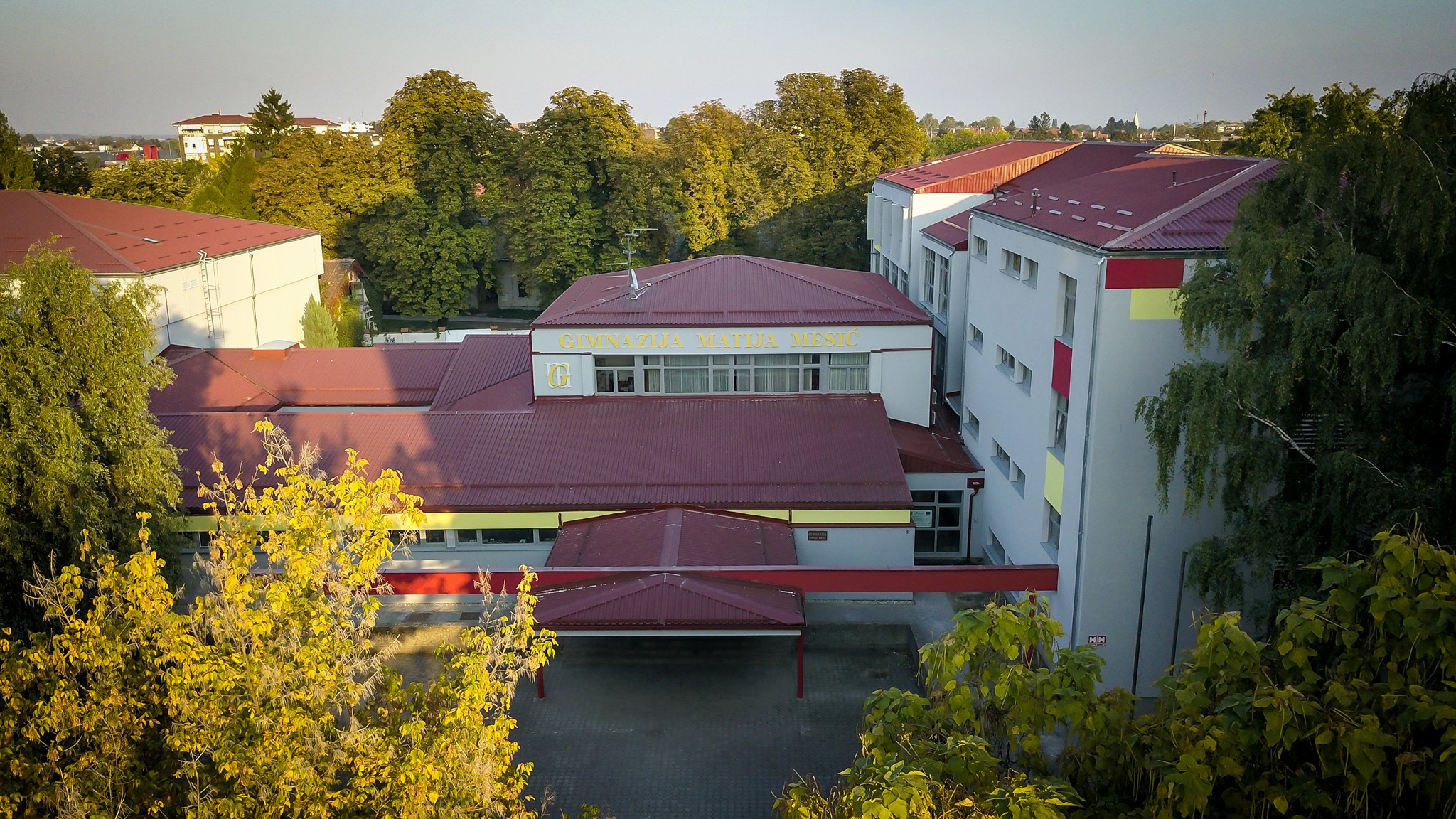 Matija Mesić high school in Slavonski Brod, where Slavonia students made their findings © Matija Mesić high school
Matija Mesić high school in Slavonski Brod, where Slavonia students made their findings © Matija Mesić high school
The misspelling or incorrect translation of food items on a restaurant or tavern menu is a regular cause of amusement in Croatia. But, the mistitling of public places - streets, squares, companies, monuments, traffic signs and even schools – is perhaps more surprising. These are places you walk past every day.
The Slavonia students were given the high bar of the official standards of Croatian language set by the Institute of Croatian Language and Linguistics. Their teacher, Vesna Nosić, has published their findings in the popular science journal Hrvatski jezik (Croatian language), which is published by the institute. Croatian language is something of a national obsession in Croatia, its acceptance as the official language very closely linked to the country's struggle for autonomy. For most of its history, the lands of modern-day Croatia were controlled by empires for whom Croatian was not their language. The use of foreign tongues has been imposed on the population of Croatia for centuries.
The most common mistakes made in the Croatian language are related to the incorrect use of the sounds ć and č, đ and dž. The letters here come from Gaj's Latin alphabet, devised by Croatian linguist Ljudevit Gaj in 1835. It is the Latin script used across the region in which to write the similar languages of Bosnian, Croatian, Serbian, and Montenegrin (in Bosnia, Serbia and Montenegro, the Cyrillic alphabet is used as well as Gaj's Latin alphabet).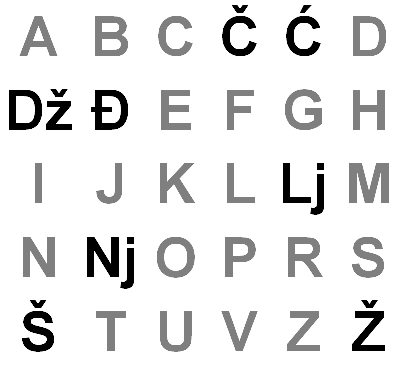
The contemporary version of Gaj's Latin alphabet (it originally contained Dj, which was replaced by đ. This alphabet ihe easiest part of learning Croatian - within 15 minutes, almost anyone can correctly pronounce all Croatian words by using this. In comparison to the Latin alphabet used by English speakers, the letters q,w,x,y are omitted. Instead, we get the additional č, ć, dž, đ, lj, nj, š and ž. Looks difficult? It isn't. Almost all of these sounds exist within the English language. Except for lj which, to English speakers, is torturously missing some kind of vowel © Albatalad
Mistakes between the ć and č or đ and dž sounds are understandable if you can pronounce Gaj's Latin alphabet. And anyone can. The easiest part of learning Croatian is Gaj's Latin alphabet – all of the sounds exist within the English language, all of the letters are always pronounced in exactly the same way (unlike English). The difference in sound between ć and č or đ and dž in spoken Croatian is difficult to perceive if you are not a native speaker (often, even if you are!)
Some of the mistakes found by the Slavonia students are perhaps more forgivable – the standard of Croatian their comparisons was made against is rigid. Thus, pekarna (bakery) instead of pekarnica, or dućan (shop) instead of trgovina were classed as mistakes, but are actually in everyday use on streets across Croatia.
Other mistakes found relate to grammar, spelling and the misuse of upper case or lower case lettering. For instance, Ulica Pavleka Miškina should be written Ulica Pavleka Miškine (the word ending changes to denote it is the street of Pavlek Miškina), Crkva Gospe od brze pomoći, should be crkva Gospe od Brze Pomoći; Muzej Brodskog Posavlja should be Muzej brodskoga Posavlja and Šetalište Braće Radić should be Šetalište braće Radića (denoting it is the promenade of the Radić brothers).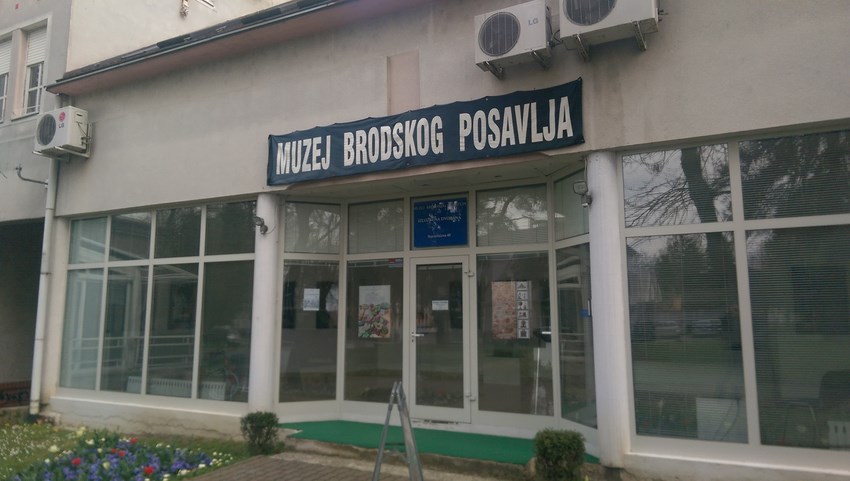 Not sure which words should be in upper case or lower case in Croatian? Write everything in upper case - problem solved! © Slavonski Brod Tourist Board
Not sure which words should be in upper case or lower case in Croatian? Write everything in upper case - problem solved! © Slavonski Brod Tourist Board
Sitting to one side and watching how others do something, judging them, then informing them they are doing it incorrectly is not the most pleasant way to occupy your time. However, for the purposes of this study, this not-uncommon activity in Croatia is exactly what was asked of the Slavonia students. However, as noted in today's coverage of this story in Index, there is a great saying in Croatian that serves as a response to any unwanted judgments coming from those on the sides - “clean up the trash in front of your own doorstep before you discuss that which lies in front of your neighbour's”. And, that's exactly what the Slavonia students did – and found out that the name of their own school was spelled wrong.
Experience More With Top 10 Best Running Routes in Croatia
November 6, 2020 - Is there a better way to get to know the beauty of Croatia than with physical recreation? To help you successfully combine pleasure and exercise, we present a list of the top 10 best running routes in Croatia.
Whether you are a lover of tranquility, nature, and fresh air, or are amazed by the winding roads along the rivers or the beautiful views from the mountain tops, in these top 10 best running routes, everyone will find something for themselves. From Slavonia and Zagorje, through Istria, Kvarner, and Lika, all the way to Dalmatia, RunCroatia collected the top 10 running routes in Croatia, described and photographed by the running enthusiasts themselves.
1. Bošana, Pag
Running in the company of a flock of sheep
Text and photos: Alan Sinovčić
My favorite running track is on the island of Pag, on the old (mostly macadam) road from Pag to Novalja. The trail starts in Bošana, a part of the Pag town that is very easy to reach – you go north from the city and then take the road by the sea.
About a kilometer after the last houses in Pag begins Bošana, a small secluded place, special for the forest with which it is covered. After about another kilometer and a half, you will reach the end of Bošana where you will notice a sign indicating a special reserve of forest vegetation. There is a small parking lot where you can leave your car and go down a little lower along the way to see the beautiful beach Rozin bok.
The first kilometer and a half runs through the woods along the paved road to Sveta Marija, a place with several houses. After Sveta Marija, the path continues on the macadam. On the left side, there is a very steep path to the highest peak in Pag, Sveti Vid (351 m), and on the right side, there is a view of some wonderful beaches, among which is the beach Paška vrata, and Velebit mountain. After a little over two kilometers, on the right, there is a standard spot for photography and a sign for the 15th meridian that passes there.
Another place with just a few houses follows – Sveti Marko. The trail continues along with many coves and beaches, out of which the 750-meter-long Filino beach should be specially noted. Part of the road to Filino beach is the "hardest" - it is about 500 meters of an easy ascent. This is followed by a slight descent towards the Camp Sveti Duh.
On the left, you will pass an old pit for digging sand, and in that part, you can even expect frequent encounters with flocks of sheep. The end of this part of the trail is windy. First, there is an ascent (arrival at the paved part), and then a descent to the entrance to the camp.
The one-way trail is 7 km long. For those who want more length, I suggest that they run the road Pag – Novalja above the camp and continue on macadam roads to Gajec, an apartment complex near Novalja, which will add another 5 kilometers in one direction.
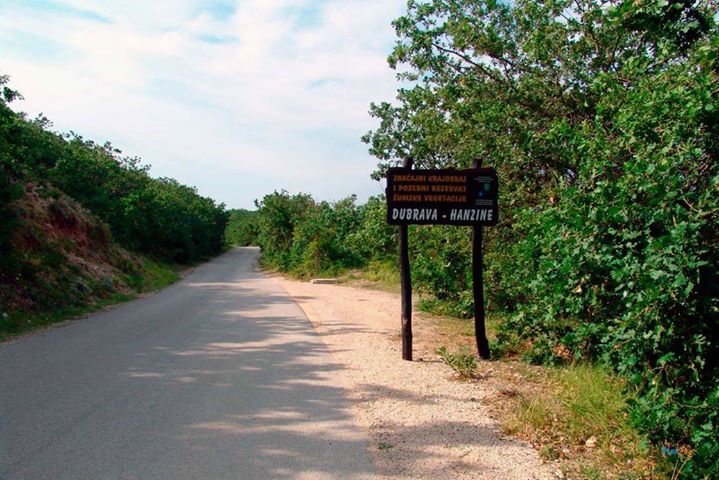

2. Dramalj, Crikvenica
For early morning lovers
Text and photo: Pero Petra
This trail goes by the sea without big ascents. The best time to go is in the morning because it's in the shade. After one kilometer, you come to Kačjak, a small peninsula that has a trim track and is designed as a sports complex. The view overlooks Krk, Klimno Bay, and the gently sunny completely calm sea in the early morning called „bonaca“. The circle along the peninsula can be extended. You can go back towards the beginning, towards Jadranovo along the new road or towards the beginning and along the coast to Selce.
This trail offers something for everyone. Whoever finds themselves in the Crikvenica town, this route is great. It’s best when you meet a team coming back from a night out!
3. Kamenjak Cape, Premantura, Istria
Where the dinosaurs walked
Text and photos: Domagoj Kranjčec
The Kamenjak peninsula is located in the southernmost part of Istria. The smell of medicinal herbs and salt, the buzzing of bees, and the murmur of the sea on Kamenjak can best be experienced in early spring and late summer. Almost 100 million years ago, dinosaurs walked through Kamenjak, and today in the summer months, it is full of walkers, runners, cyclists, and cars. Cape Kamenjak is full of macadam roads, narrow roads, and bike paths.
A circle of 15-20 kilometers from about 150 meters above sea level can be achieved by connecting Gornji and Donji Kamenjak. If your start is in the center of Premantura (near the church and the tower), head north in the direction of Pula. One hundred meters from the sign to leave Premantura, turn slightly to the left and continue along the macadam road, slowly ascending to the top of Gornji Kamenjak, where there is a large cross.
From this place, there is a beautiful view of Pula and Volme to the north, Pomer, and Medulin to the east and Cape Kamenjak to the south. Head back downhill 100 meters and turn right first to run with a view of the open sea on the west side, and again emerge on the famous path that takes you back to the very entrance to Premantura.
After the sports field, turn right onto the paved road that leads to the official entrance to Kamenjak (house with a ramp). Next, you have several trails to the cape, and my recommendation is to head towards the bay Polje and then along the narrow roads all the time running along the sea to visit the remaining bays to the Safari bar. Here you can share a gravel road with cars or cross the east side of Kamenjak to get back to the center of Premantura and your starting point.
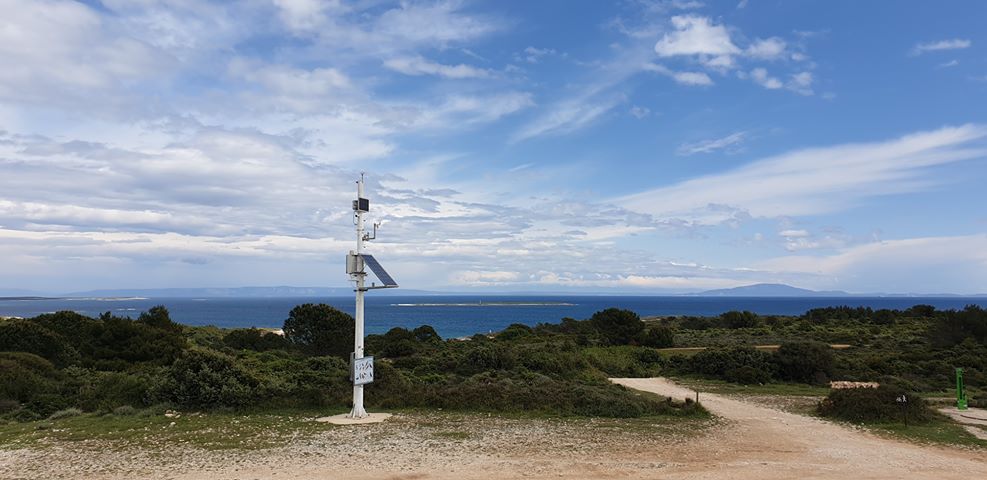

4. Slavonski Brod, along the Sava River
Along the most beautiful Croatian river beach and square
Text and photos: Boris Predmerski
Polojska cesta (Poloj road) in Slavonski Brod, named after one of the most beautiful river beaches in Croatia – Poloj (eng. field), is an unavoidable route for all recreationists and runners. The informal start of the running route is at the Vijuš sports hall complex and the city swimming pools located right next to the Sava River. It has a large parking lot, as well as an excellent plateau for warming up.
The route starts from the pool and goes through the Polojska cesta. The entire length is paved (but you can also run on grassy terrain along the trail), runs along the entire length of the Sava River, more specifically along the beautiful rafting street. Along the route, there is exercise equipment and a skate park.
From the pool to Poloj, the length is 2.5 km. There is a turn on Poloj, with the remark that you can also extend the route (we call it pockets) by circling around the cottages right next to a large sandy river beach. For those who want to spend more time in nature, they can run part of the way through the forest and feel a little trail atmosphere.
On the trail, there are three replicas of old Slavonian backyard water pumps and you do not need to carry refreshments with you.
You return on the same route to the pools where you end up running 5 km. But that's not the end. If you want a longer length, continue along the Sava towards the bridge. Run along the beautiful Sava promenade (quay) to the bridge with a slightly shorter length of 2 km where you make a turn.
Along this part of the road, you will inevitably be accompanied by kayakers and walkers. You will run next to the baroque Franciscan monastery, next to Ivana Brlić Mažuranić Square, the main town square, which in 2006 received the Croatian National Tourist Board award for the most beautiful square in Croatia.
Under the bridge, you can turn back. You will be greeted by anchored riverboats and fishermen on one side, and on the other side by the baroque and magnificent Fortress ship. Going back, you will run less than 10km, but with the aforementioned pockets on the Poloj, you will have a dozen kilometers under your feet.
I mentioned the Fortress ship above – it is a racing story in itself. In the very center of the city, kilometers circle through the paths of the largest fortified baroque buildings in Croatia and one of the largest in Europe. Running through baroque casemates and fortress tunnels take you back to the 18th century when it was built. A unique "Cross in the Fortress", as well as the "Slavonian Race" which starts and ends in the Fortress, are organized here.
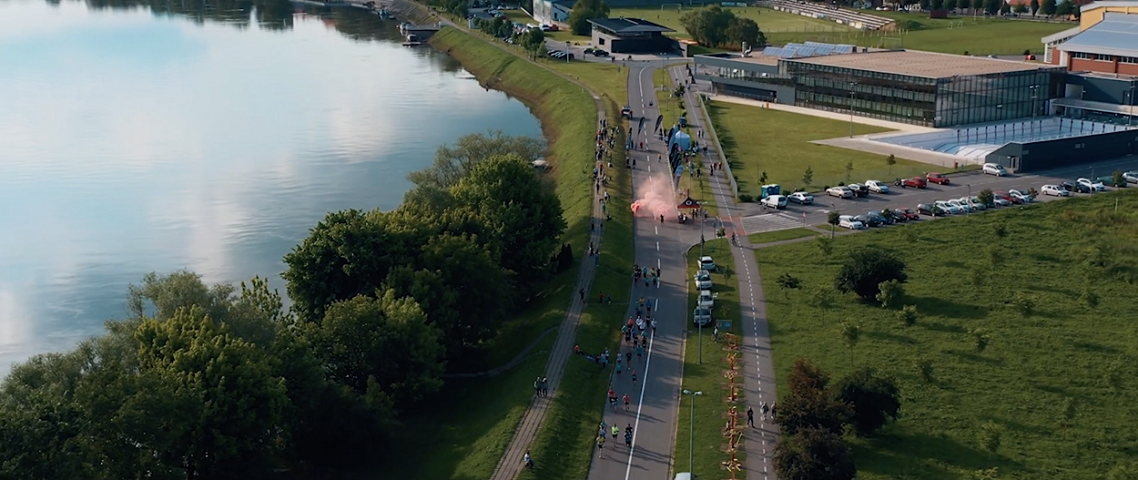
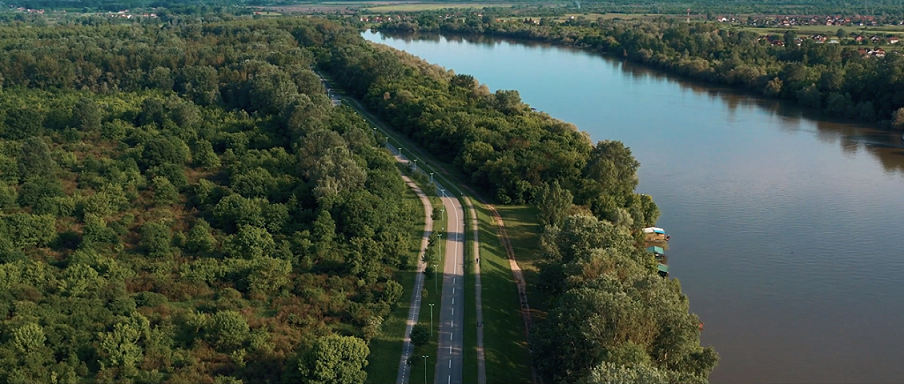
5. Šibenik, promenade Sveti Ante
Perfect surface
Text and photos. Ljiljana Šarić
The route is 5.6 km away from Šibenik and stretches along the seaside, where is the Channel of St. Anthony near the Fortress of St. Nicholas. The path or promenade is used by many, not only because of the beautiful view, but the surface is perfect for running or walking. The Šibenik Triathlon has been held on this track for two years and all participants are delighted.
6. Ludbreg, Crazy Hill Trail route
All the beauties of Ludbreg
Text and photo: Drazen Komes
One of the starting points is the Island of Youth - a small green oasis in the center of Ludbreg bordered by the Bednja River with many lakes, a paradise for animals and fishermen. After running around the Island, you pass by apple orchards, cornfields, and steep vineyards to the forest that abounds in many hidden ravines and streams, and at the last ascent and just before the last descent a view of the whole Ludbreg. The trail is an ideal opportunity to present widely all the beauties of our region, our people, and customs.
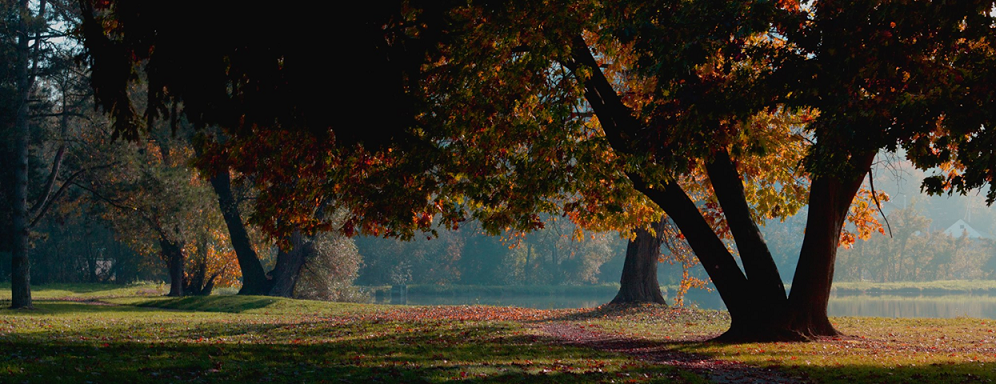
7. Mali Lošinj
Outdoor spa on the Island of Vitality
Text and photo: Goran Todorov
Some of the shots are from the trail where a large number of tourists run. In my opinion, that 10-13 km is certainly the most beautiful trail I have ever run, if not the most beautiful, and I have run a lot of them. The sound of the waves, the special scent of the forest, hidden coves, and the song of seagulls. Paradise!
Perhaps one of the most beautiful promenades in the world leads you about 3 km from the direction of Hotel Vespera, through the Camp Čikat, to the old resort of Petrokemija.
Lošinj is also known for its outdoor spa. When you are there and inhale that air, the smells are more special than ever, and the views that reopen after each new bend simply take your breath away.
The trail is arranged and relatively flat and leads you along the sea, next to camps and hotels. There’s a special view all the way and a special atmosphere in the race. After the old resort of Petrokemija, about 3 km away, the paved path ends, but it is possible to run below, but the path is of the lighter trail profile and goes about 2 km in the direction of the city.
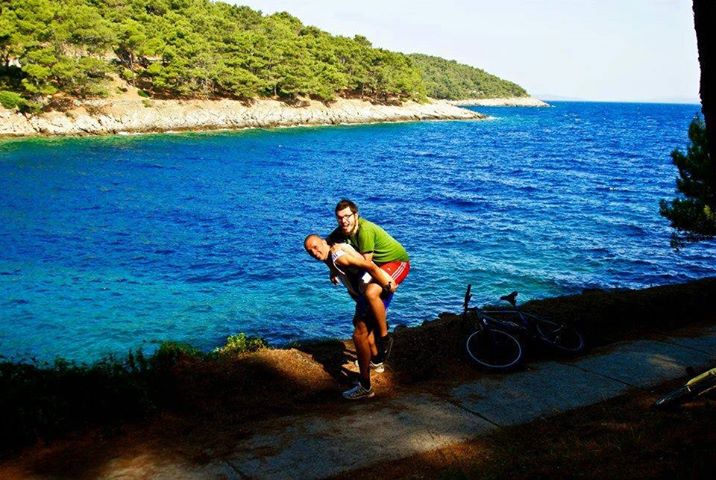
8. Otočac
A circle along the Gacka River
Text and photo: Josip Loškarin
Gacka Valley, an hour and a half drive from Zagreb, Rijeka, or Zadar, known for its beautiful river and natural beauty, is an ideal place for walking, running, hiking, or cycling. Members of the racing section of the Otočac Sports Club have singled out an interesting 10 km long road track.
The trail is circular, starting and ending in the City Park in Otočac. It largely follows the river Gacka on both sides of the coast, passing through the mountainous but gentle landscapes of the Gacka Valley. The trail has a total elevation of 74 meters.
Detailed description:
The trail starts in the Otočac City Park (A) in a westerly direction and turns left towards Ban Josip Jelačić Street (B). Then continue straight through Luka Street (C) and further towards the village of Prozor (D) to Prozorski dom (E) where you turn first right and then at the next crossroads before the bridge turn left. You continue straight up a slight hill to Orešković bridge (F), after which you turn right towards Šatrići (G). At the next intersection, turn right up a slight hill to Obilje (H) and continue without turning to the Port Bridge (I). After the bridge, turn left and return through Luka (J) and Ban Josip Jelačić Street (K) to the Otočac City Park (L).
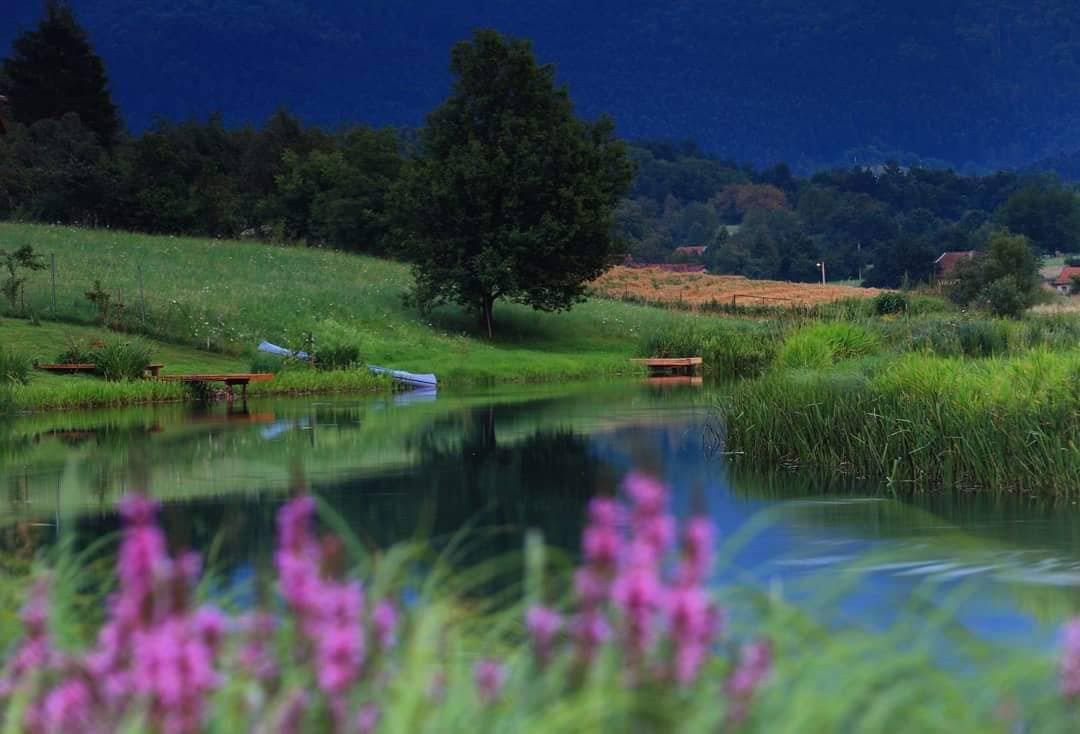
9. National Park Paklenica, Ivine vodice
Refreshment in the hot months
Text and photos: Andrija Savić
Among all the tracks of National Park Paklenica, this track stands out with its aesthetics and simplicity. The trail starts from the mountain lodge Paklenica and goes to the mountain shelter Ivine vodice. In one direction it is 5.5 km, and the slope is 12.2 percent. It is also one of the easiest trails since it has a slight slope (the last third is the steepest) and it is a trampled single-track.
At the mountain lodge, there is a pool where you can bathe and recover in the summer months, given that the water temperature is around 15 degrees. You can always catch axes and chop some wood on Ivine vodice and thus spice up your training. The trail runs through the forest all the time which is ideal for the hot months. All in all, a real treat for trail racers looking for clean air.

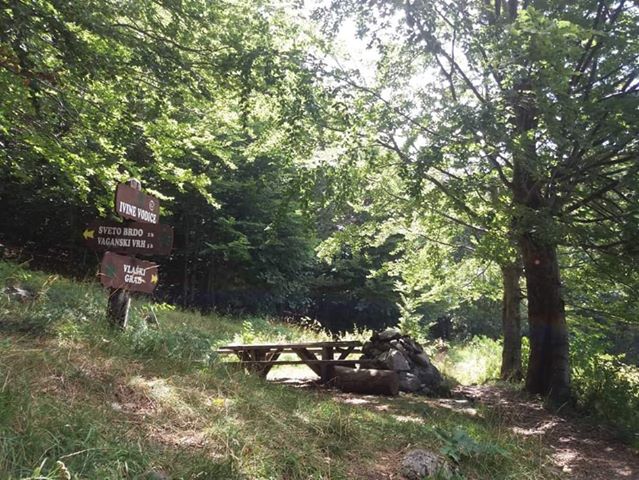
10. Učka
A view from the top of Istria
Text and photos: Marko Jelić
The route I usually take starts from Moščenička Draga. Along the coast, take the 750 steps to Moščenica, which overlooks Rijeka and Kvarner. From Moščenica, the road continues to Mala Učka. From Mala Učka, I head towards the beautiful Babin Grob lookout point, which houses a shelter and a lodge. Back from Mala Učka, sometimes I turn to Suhi Vrh.
I continue my journey to Vojak, the highest peak of Učka mountain, and therefore the whole Istrian peninsula. From there, there's a view of the whole of Istria, the islands, Risnjak, and Slovenian mountain peaks. The options are many but for me, this route is favorite!


For the latest travel info, bookmark our main travel info article, which is updated daily.
Read the Croatian Travel Update in your language - now available in 24 languages
Croatia Pan Europe Trains Will Run 160 Kilometres Per Hour By 2030
November 2, 2020 – From southern Spain to Budapest through Rijeka and Zagreb and from Salzburg through Zagreb, Belgrade and Skopje to Greece, Croatia pan Europe trains will run 160 kilometres per hour by 2030
In the biggest investment ever made in the infrastructure of the country's rail network, Croatia pan Europe trains will run 160 kilometres Per Hour By 2030. In an investment costing 4.5 billion Euros, 750 kilometres of railways will be modernised.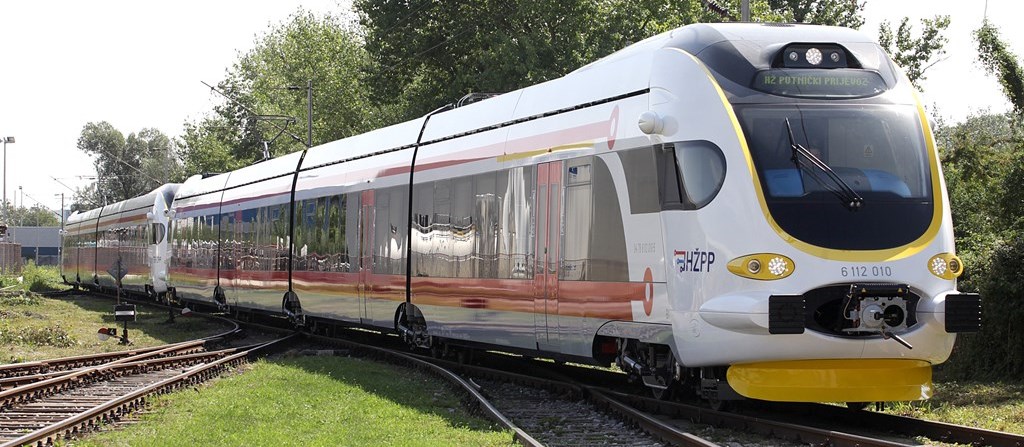 © HZPP
© HZPP
The lines that will receive the upgrade will connect Rijeka to Budapest in Hungary via Zagreb (RH2) and Zagreb to Belgrade via Vinkovci (RH1). Though these lines already exist, they have never undergone an overhaul of the scale proposed. The modernisation with ensure double lanes across the whole of both routes and facilitate passenger train speeds of 160 kilometres per hour.
The level of investment means that during the next ten years, HŽ Infrastruktura's (Croatian Railway Infrastructure Company) rebuild of the Croatia pan Europe trains network will be the largest infrastructure project in the Republic of Croatia and the largest beneficiary of EU grants in the transport sector. Most of the money for the modernisation is coming from European Union grants. Almeria on the Mediterranean, in Andalusia, southern Spain, where the Mediterranean Corridor begins © ddz photo
Almeria on the Mediterranean, in Andalusia, southern Spain, where the Mediterranean Corridor begins © ddz photo
The RH2 line is part of the Mediterranean Corridor which connects the south of the Iberian peninsula with eastern Hungary via six countries. The line runs from Almeria on the Mediterranean coast in the south-east of Spain, through Madrid and Barcelona. It passes through Marseille in France, then northern Italy, Slovenia, Croatia, the Hungarian capital of Budapest, before finishing in Záhony in the east of Hungary, not far from the border with Ukraine. The route covers more than 6000 kilometres. The Croatian section will pass through Jurdani (six kilometres north of Opatija), Rijeka, Karlovac, Zagreb, Dugo Selo, Križevci and Koprivnica.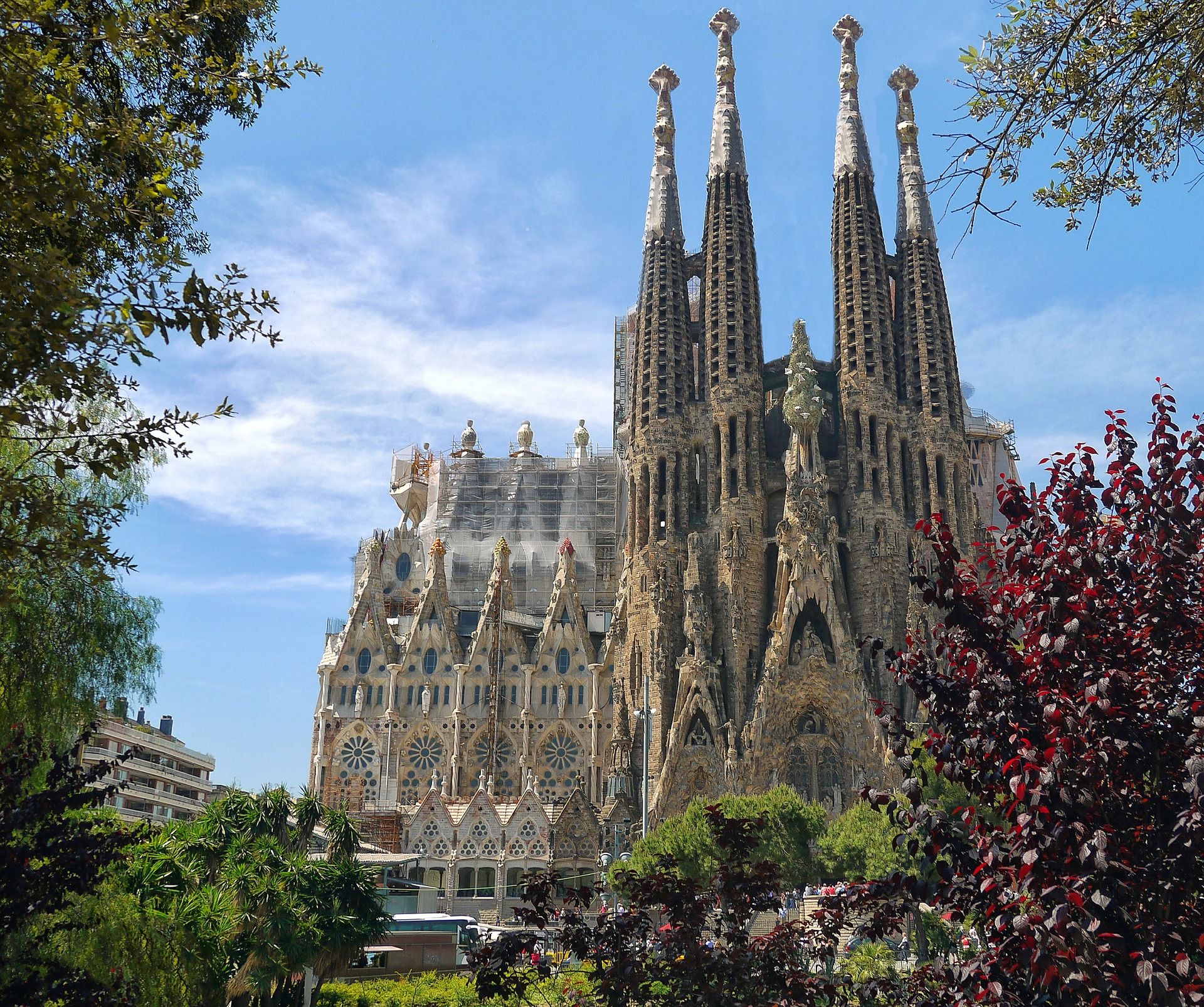 To Croatian rail passengers, the Spanish city of Barcelona will be just a few hours away by 2030 © Patrice Audet
To Croatian rail passengers, the Spanish city of Barcelona will be just a few hours away by 2030 © Patrice Audet
The RH1 line is part of the Pan-European Corridor X. The Croatia pan Europe trains section of this transport route was once one of the three lines taken by the Orient Express. The modernised rail line will start in Salzburg, Austria and pass through Ljubljana before reaching Zagreb. The line will pass through Slavonski Brod and Vinkovci before making its way to Belgrade, then Niš in southern Serbia. The old Oriental Express line then headed east, to Istanbul via Sofia, Bulgaria. The EU-funded train section of the Pan-European Corridor X instead heads south, to Thessaloniki in Greece via Skopje in Macedonia.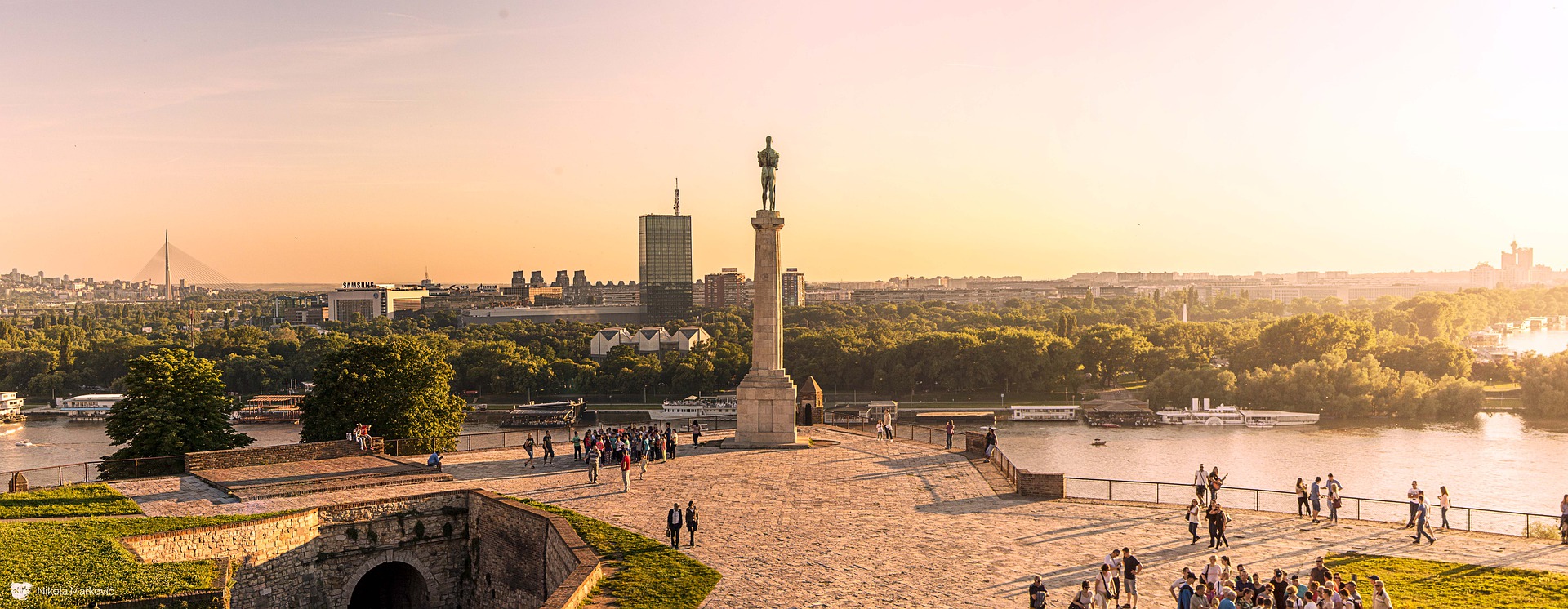 The rail journey time between Zagreb and Belgrade (pictured) will be shortened considerably by the improvements © Djordje Jovanovic
The rail journey time between Zagreb and Belgrade (pictured) will be shortened considerably by the improvements © Djordje Jovanovic
Trains are currently the greenest transport option for long-distance travel. As the world heads in the direction of seeking energy sources that do not rely on finite fossil fuels, rail also currently looks to be the long-distance travel option best-equipped to meet this challenge. In the future, visitors from all across Europe may increasingly rely on the Croatia pan European trains network in order to access the country. The improvements also increase business and leisure opportunities for Croatians in Europe. Thessaloniki in Greece is one of the most popular cities in Europe for visitors. The renewed rail section of the Pan European Corridor X will end here © Dimitris Vetsikas
Thessaloniki in Greece is one of the most popular cities in Europe for visitors. The renewed rail section of the Pan European Corridor X will end here © Dimitris Vetsikas
Around 935 million Euros was invested in the Croatian railway infrastructure between 2010 and 2019. The new investment dwarfs those figures. The initial investment, occurring between 2020 and 2024 amounts to as much as 1.8 billion Euros, of which almost 78.7 per cent is co-financed by the European Structural and Investment Funds (ESI) and the Connecting Europe Facility (CEF). From 2025 to 2030, EU funds totalling more than 2.7 billion Euros are expected to be invested in the Croatia pan European trains network.
Freight train passage along the lines will also be increased, reaching a new speed of 120 kilometres per hour. The Croatia pan European trains network also offers great potential to open up continental Croatia regions to international visitors. The Croatian railway network currently has 2,617 kilometres of track, of which 274 kilometres are double-track and 980 are electrified.
For the latest travel info, bookmark our main travel info article, which is updated daily.
Read the Croatian Travel Update in your language - now available in 24 languages
Continental Croatia Trains: Inland Opens Up With Green Travel
October 3, 2020 - With charter airlines in a state of flux and Croatia Railways beginning a renewal of their fleet in Slavonia, are continental Croatia trains the eco-friendly and best way to unlock the inland's amazing potential?
Everything changes. Nothing stays the same. Even before 2020 arrived, lifestyles and trends were headed in new directions. Eco-tourism and agro-tourism were two of the fastest-growing areas within the travel sector, this behaviour change a response to concerns about the environment. And nowhere in the country stands better poised to take advantage of this interest than continental Croatia.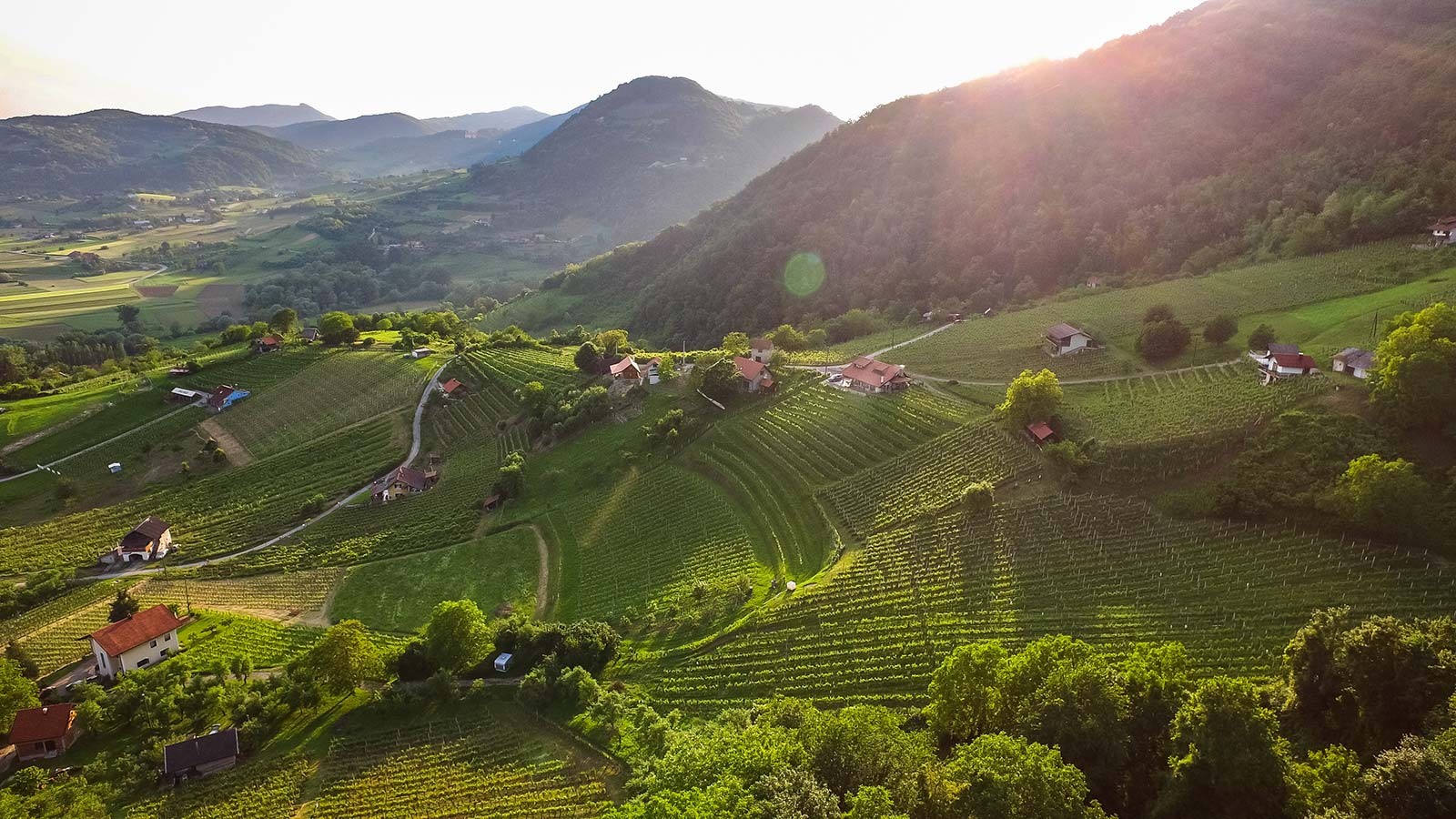 Impossibly pretty Zagorje - the region lies just north of Zagreb and is accessible by continental Croatia trains © Ivo Biocina / Croatia National Tourist Board
Impossibly pretty Zagorje - the region lies just north of Zagreb and is accessible by continental Croatia trains © Ivo Biocina / Croatia National Tourist Board
From the impossibly pretty hills of Zagorje, the peaceful rivers of Karlovac county and the hidden vineyards that surround the capital Zagreb to the vast Pannonian flatlands that stretch to Slavonia, Baranya, Vukovar-Srijem and beyond, the varied topography of continental Croatia is wild, exciting and - by many - wholly undiscovered.
This is land where agriculture and nature thrive side by side, where the stresses of modern-day existence ebb away as you readjust to a way of life that would look mostly familiar to the people who lived here centuries ago. These are places where you can truly be at one with yourself and with your surroundings. In continental Croatia, you often find yourself in an environment that is both timeless and traditional, yet wholly contemporary in regards to its ecological aspirations. And you're never far away from an exciting city environment that you can dip into on a whim – not just Zagreb, but Osijek, Slavonski Brod, Karlovac, Sisak and Varaždin too. To those who really know and love Croatia, Osijek is simply unmissable. It is both the capital of and the doorway to Slavonia and Baranya and should be more accessible by continental Croatia trains. Sadly, international transportation links to the city by air are also quite poor. Improvements in accessibility to Slavonia and Baranya by rail and road are imminent © Romulić & Stojčić
To those who really know and love Croatia, Osijek is simply unmissable. It is both the capital of and the doorway to Slavonia and Baranya and should be more accessible by continental Croatia trains. Sadly, international transportation links to the city by air are also quite poor. Improvements in accessibility to Slavonia and Baranya by rail and road are imminent © Romulić & Stojčić
Unlocking the incredible potential of continental Croatia relies on getting the message out there and facilitating travel to these regions
In recent TCN features we have detailed that motorways within Croatia are among the best in Europe - once you're inside Croatia, travelling by car (or bus) between the regions couldn't be easier. We have also seen evidence of the huge interest in travelling here by rail and using continental Croatia trains.
Of all the modern methods of long-distance travel, rail is by far the most eco-friendly. What better way to begin an environmentally friendly holiday than by arriving on continental Croatia trains? When the country wisely decided to prioritise its internal motorway system, a modern and fast inter-regional rail network was put on the back burner. Nowhere suffers greater from this decision than continental Croatia.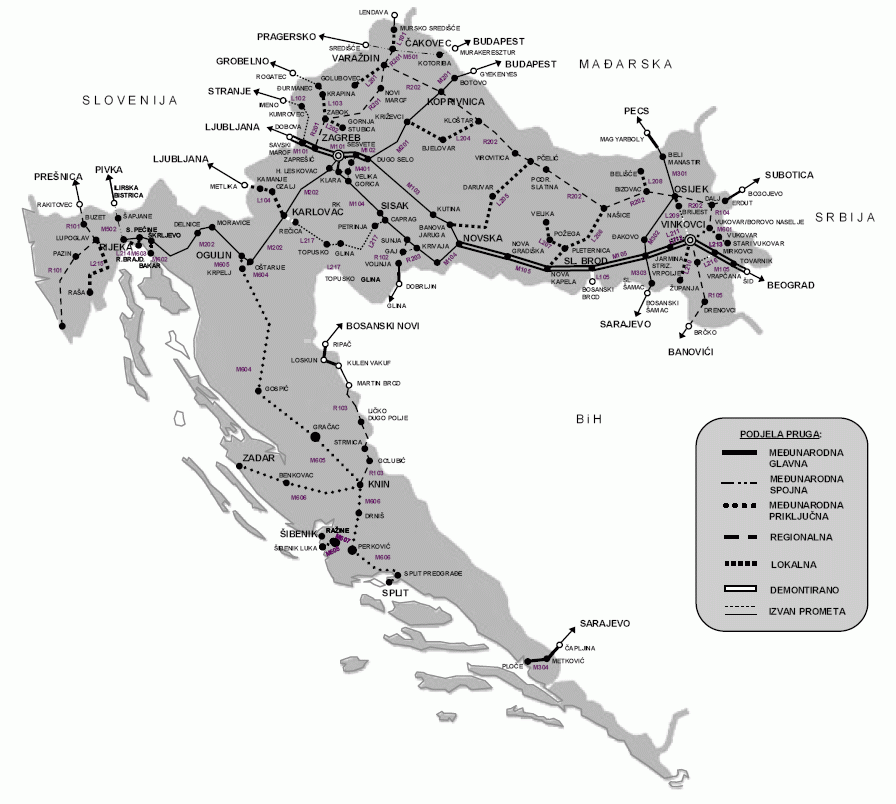 The Croatian rail network © Croatian Official Document uploaded to Wikipedia by Epepe
The Croatian rail network © Croatian Official Document uploaded to Wikipedia by Epepe
The only high-speed line that currently exists in Croatia links Rijeka to Budapest, via Zagreb and Koprivnica. Planned improvements hope to cut journey times between Zagreb and its nearest coastal city to an hour. Same as it ever was - Rijeka was the first Croatian city to be connected internationally by rail. That line also ran into the heart of Austro-Hungary and facilitated upper-class travel to places like Opatija. But does it best benefit the country to invest in more links to the coast or in continental Croatia trains? Well, the inland is not being ignored. Upgrades are being made to continental Croatia trains. This impressive beast actually services the country's coast. But would more investment in the continental Croatia trains network better service more people and help unlock the inland to tourists? Around 70% of the country's inhabitants live in continental Croatia © HŽPP
This impressive beast actually services the country's coast. But would more investment in the continental Croatia trains network better service more people and help unlock the inland to tourists? Around 70% of the country's inhabitants live in continental Croatia © HŽPP
The rail link between Zagreb and Slavonski Brod is so historic that it was once part of the four routes of the Orient Express. It has been maintained to a standard where you can make a relatively quick journey from the capital to Vinkovci via Slavonski Brod. The same cannot be said for rail travel to Osijek, the access point to Baranya and much more. So slow is the connection between Osijek and Zagreb that it has been possible over recent times to reach the Slavonian capital quicker by taking the train to Vinkovci, then the bus to Osijek, rather than travelling direct by rail.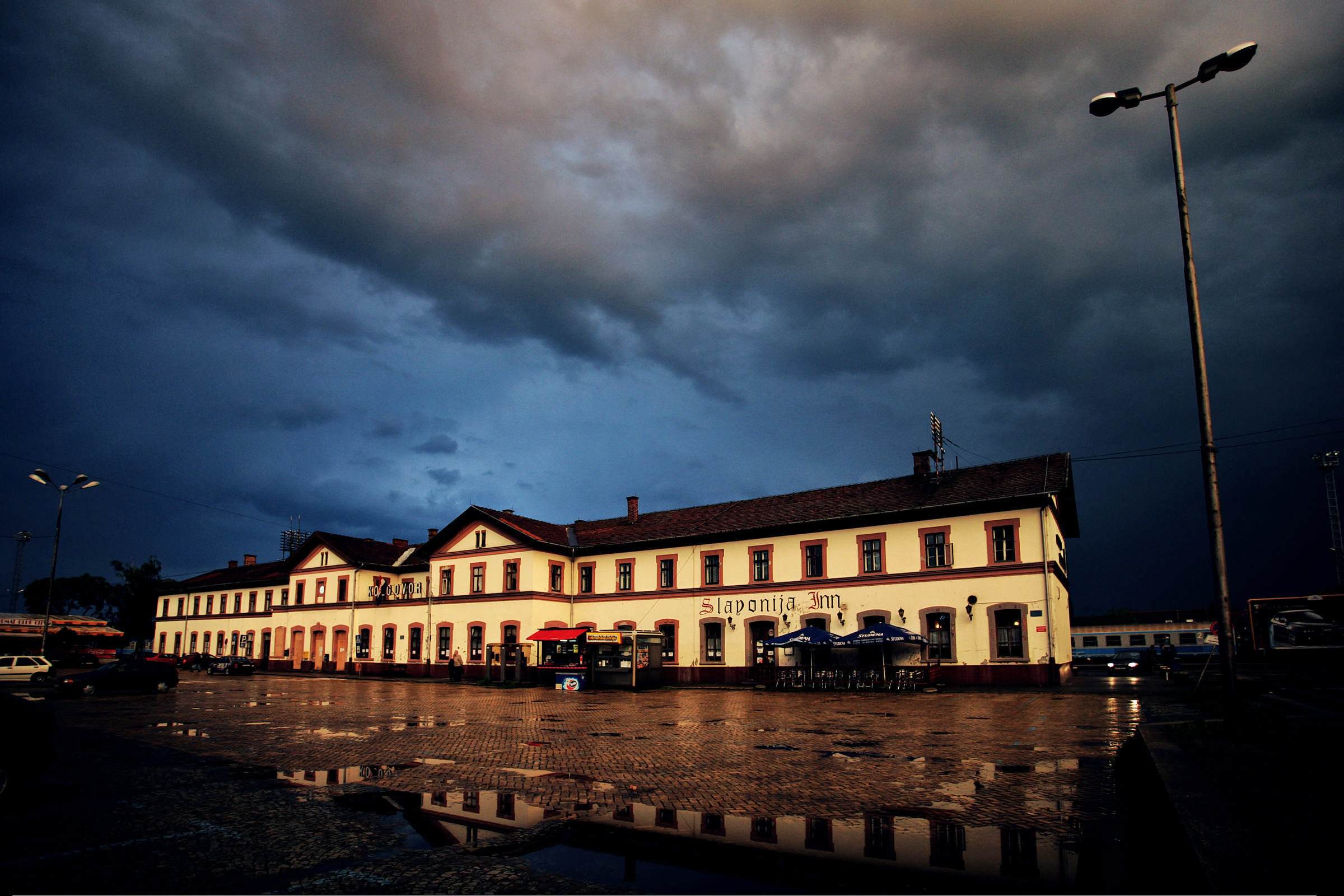 Osijek train station. A renovation to the building is planned for the near future © Romulić & Stojčić
Osijek train station. A renovation to the building is planned for the near future © Romulić & Stojčić
However, in February this year, Croatian Railways introduced four direct daily lines between Slavonski Brod and Osijek. And there will be a new tilting train line that will run between Zagreb to Osijek on Friday afternoon and from Osijek to Zagreb on Sunday afternoon, facilitating student travel. On October 15, the first low-floor train will run between Osijek and Vinkovci as an additional part of the renewal of their continental Croatia trains fleet in Slavonia. The welcome return of Croatia's second-oldest international rail line - linking Osijek to Pécs in Hungary, via Beli Manastir and Baranya - was introduced in late 2018.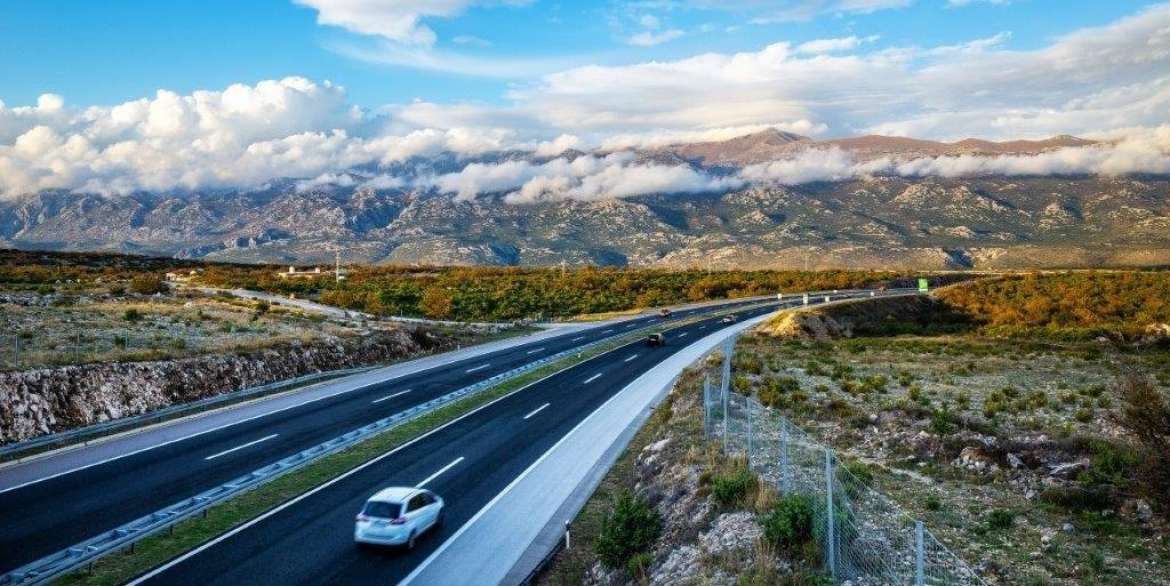 A motorway stretch between Metković and Dubrovnik, integrating the Pelješac bridge and the Croatian segment of the European corridor are the final big remaining projects in a three-decade-long undertaking to give Croatia one of the best motorway networks in Europe. Should Croatia's rail network be next? © Hrvatske Autoceste
A motorway stretch between Metković and Dubrovnik, integrating the Pelješac bridge and the Croatian segment of the European corridor are the final big remaining projects in a three-decade-long undertaking to give Croatia one of the best motorway networks in Europe. Should Croatia's rail network be next? © Hrvatske Autoceste
Access to Slavonia and Baranya will also be massively facilitated upon completion of the European corridor, which will connect North Europe to the Adriatic. Starting in Budapest, it necessitates the building of a bridge near Beli Manastir. Thereafter the motorway will pass by Osijek, connect to the Zagreb-Slavonia motorway near Lipovac, then pass through Bosnia and its capital Sarajevo and on to Ploče.
The removal of budget airline flights to the airport in Osijek remains a hindrance to attracting many international visitors to Slavonia and Baranya. However, with charter airlines facing the greatest uncertainty of all modes of transport at the current time, though their return is a must, it is perhaps now an ambition that should remain more long term. For the immediate future, improvements to rail travel look to be a brilliant way of opening up not only Slavonia, Baranya and Vukovar-Srijem, but also an eco-friendly access point capable of serving the whole of untapped continental Croatia.
For the latest travel info, bookmark our main travel info article, which is updated daily.
Read the Croatian Travel Update in your language - now available in 24 languages
First Slavonski Brod Coronavirus Death Brings Croatian Fatalities to 3
March 26, 2020 - A COVID-19 positive patient passed away this afternoon in Slavonski Brod, confirmed the National Civil Protection Headquarters on Thursday night.
Index.hr reports that a 65-year-old woman from Slavonski Brod, who was in serious condition with previously diagnosed cancer, was admitted to the hospital in Slavonski Brod last night.
Although the patient was not in self-isolation and there were no symptoms suggestive of the presence of the coronavirus, the team that received and examined the patient decided to take the sample and send it for analysis to Zagreb.
The patient was then placed in a special unit of the Joint Emergency Reception Unit.
About 16 hours later, Zagreb confirmed she was coronavirus positive, and an hour later the patient passed away. As a result, the entire Joint Emergency Reception Unit was disinfected and patient admission continued, according to SB Plus.
It should be reminded that a 74-year-old Zagreb resident died at the Infectious Diseases Clinic "Dr. Fran Mihaljevic" today.
Minister Vili Beros confirmed that the 74-year-old patient from Zagreb was a cancer patient. His wife is also in serious condition.
"There are currently eight more respiratory patients, one of which is awaiting a laboratory test, the other seven are not in critical condition. The other 70 patients are stable and will hopefully not require more support in terms of intensive care. Three of them are slightly more ill," said Director of the Infectious Diseases Clinic "Dr. Fran Mihaljevic", Alemka Markotic.
Yesterday it was confirmed that a caterer from Istria who passed away a week ago died of the coronavirus.
At the afternoon press conference of the National Civil Protection Headquarters, 14 new coronavirus cases were confirmed, bringing the total to 495. Twenty-two people have recovered.
In the past 24 hours, Croatia had an increase of 53 patients, which is less than yesterday when Croatia had 63, the day before yesterday, when 69 were diagnosed, Health Minister Vili Beros said at a news conference.
Most affected are in Zagreb (225), followed by Istria County (40), Krapina-Zagorje County (36), Primorje-Gorski Kotar County (35), Split-Dalmatia County (34), Osijek-Baranja County (31), Dubrovnik-Neretva County (22), and Karlovac County (18).
There are 15 cases in Šibenik-Knin County, 14 in Varaždin County, 7 in Sisak-Moslavina County, 6 in Zadar County, 3 in Zagreb County, 2 in Bjelovar-Bilogora County, 2 in Međimurje, one in Vukovar-Srijem County, and in one in Lika-Senj County.
Follow our live updates on the coronavirus in Croatia.
Đuro Đaković Group Must Undergo Restructuring, Find Strategic Partner
ZAGREB, January 23, 2020 - Economy Minister Darko Horvat said on Thursday that the Đuro Đaković metal and mechanical engineering group, which is expected to receive today a loan in the amount of 150 million kuna, did have prospects but that it had to make a plan for its overhaul and find a strategic partner.
Asked about the Slavonski Brod-based company, which Prime Minister Andrej Plenković is expected to visit today, Horvat told reporters after a meeting of the inner cabinet that the company would use the 150 million kuna loan to pay a part of its financial obligations.
"... a part of the debt to suppliers will be paid, as will debts to the state, and the company will get an opportunity to buy goods and materials and carry out three existing contracts, which are expected to secure the company additional liquidity in the amount of 128 million kuna by the end of April," Horvat said, adding that the company did have prospects but that it had to make a programme for its restructuring, which would have to be approved by the European Commission.
He stressed that the company had to find a strategic partner and that the strategic partnership would have to be closely monitored.
Asked how realistic finding a strategic partner was, Horvat said that he would not discuss it in public if he did not believe that it was possible.
The government last week decided to provide a state guarantee for a 300 million kuna loan for Đuro Đaković Group, Đuro Đaković Special Vehicles and Đuro Đaković Industrial Solutions.
A total of 150 million, to be secured as a loan from the Croatian Reconstruction and Development Bank or other commercial banks in the country and/or abroad, is intended to help unblock the group's account, launch production and enable the execution of existing contracts, as well as the payment of liabilities to financial institutions and the state.
The remaining 150 million will be used as operating assets for production in Đuro Đaković Special Vehicles.
More business news can be found in the dedicated section.
How Ivana Brlić-Mažuranić's Characters Found Advent in Their Hometown!
Malik Tintilinić, Domaći, Palunko, Kosjenka, Regoč, Potjeh and Stribor are the characters from the works by Ivana Brlić-Mažuranić, a famous Croatian writer.
Those characters are known to every Croatian child, and now they've come back to their hometown of Slavonski Brod. Both the young and the old in the town are happy to see them walking around Slavonski Brod as a part of the event "The Advent of Long Ago" (the title of the event is a play of words based on the short story collection by Ivana Brlić-Mažuranić).

The town of Slavonski Brod created a whole new experience of Advent for their visitors but also for the people of the town, based on the fairy tale world from the writer's imagination. Ivana Brlić-Mažuranić wrote some of her best works while living in Slavonski Brod, and the town's main square is named after her. The hologram light spectacle on the water wall of the canal by the fortress of Slavonski Brod provides the unforgettable experience of the Ivana's world of fairy tales. Numerous decorations all over the town invite you to take a photo with a favourite character of Ivana's.
On the main square you can find a large pop-up book of "Tales of Long Ago", where the visitors can find the Stribor's Forest, dance with the Grandma and the Brownies, spend time with Quest, Maruna and Ljutiša and take a photo with the bride Neva by her mill (please, if you have no idea what we're talking about, check out this treasure I just found while researching the translations for this article: the .pdf of the English translation of the Tales of Long Ago! I know what I'm gonna be doing on a first winter evening in Zagreb, reading the tales I've read many times, but in English.)
The locations are not accidental, as the legend says that the Brownies jumped in front of Ivana and her children, lead by Wee Tinkilinkie in their family home by the promenade, and the fortress where a lot of events for children are taking place must be the same fortress Reygoch saved.
Numerous workshops with original names are prepared for various generations of visitors: Hlapić's red boots, Frozen Tinkilinkies, Stribor's Wheat and many others. There are two skating rinks in the town, in the fortress and at the main square, and many concerts will be organized in this period.
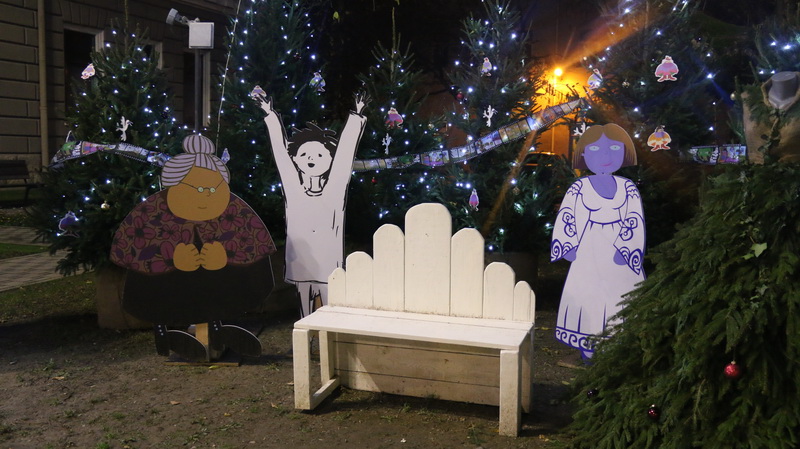
Ivana Brlić-Mažuranić is one of the most famous Croatian writers, repeatedly nominated for Nobel prize in literature. She lived in Slavonski Brod, where the Tales of Long Ago were written while Ivana took care of her seven children. Published in Croatian in 1916, they saw their first English translation in 1922 in New York (accessible through the link above), and in the next ten years, they were translated to Swedish, Czech, Danish, Russian, German and Slovakian language.
To commemorate the memory of our world-famous author, Slavonski Brod started the project of the reconstruction of Ivana's family's house, with the intent to turn it into the Ivana Brlić-Mažuranić Interpretation centre. In order to create that world of magic and fantasy in the centre of town, they're working with Helena Bulaja Madunić, who made Ivana's tales famous around the world (again). In 2002, she and a team of international artists created one of the first animated interactive digital works of art in the world „Croatian Tales of Long Ago“. The project won numerous awards and can be accessed at http://priceizdavnine.net/. The town of Slavonski Brod plans to remember the most famous Croatian children's author Ivana Brlić-Mažuranić in the future to a greater degree, creating the recognizable, innovative and valuable items of cultural heritage, which can become a worthy tourist attraction.
Unions Demand Urgent Meeting with Plenković over Đuro Đaković
ZAGREB, December 19, 2019 - The Metal Workers' Union (SMH) and the Alliance of Autonomous Trade Unions (SSSH) warned on Thursday that the situation at the Đuro Đaković mechanical engineering group was alarming, demanding an urgent meeting with the government to set a date for the appointment of a new management board and to restart production.
"We demand that Prime Minister Andrej Plenković receive representatives of the workers of the Đuro Đaković Group and trade unions not to discuss promises but specific dates and solutions," SSSH leader Mladen Novosel told a press conference.
Novosel expressed fear that the situation in the company, based in the eastern town of Slavonski Brod, resembled that at the failed Uljanik shipyard. "An identical scenario, promises, the same characters and actors," he added.
"Is this the government plan for Slavonia? This is not an emigration, but an exodus. We are calling on the government and the prime minister to receive us as a matter of urgency to agree dates and see when we will get a new management board and investment, when we will restart production," the head of the strike committee, Ivan Barić, said.
Barić said that the situation in the company is dire, production has been suspended because of the strike, and 95 percent of their products are exported to Europe.
"Over 100 million kuna (13.5 million euro) is blocked, 96 percent of products cannot be delivered to their clients. The company's account is blocked and we cannot buy goods," Barić said.
More about Đuro Đaković can be found in the Business section.
Government to Help Find Money for Đuro Đaković Workers' Wages
ZAGREB, November 1, 2019 - Economy Minister Darko Horvat said on Friday that the necessary funding for overdue monthly wages of workers of Đuro Đaković metal and mechanical engineering group would be found and that after that, decisions should be made on the future of that Slavonski-Brod based group.
Asked by the press in Veliko Trgovišće on Friday whether it was the Croatian Postal Bank (HPB) that should provide financial means for that purpose, Horvat answered in the affirmative.
Some 70 million kuna should be used for the overhaul of the group.
"We are together with the HPB seeking a model that should help restructure Đuro Đaković. Those 70 million kuna should provide a tailwind for the company in the next six months until the completion of the restructuring and until we find a new, true and good strategic partner," Horvat said.
The accounts of the Đuro Đaković were blocked on Wednesday and the management started negotiations with creditors on the removal of the blockade. The company's workers have been on strike since 24 October because they have not received wages for September.
On Wednesday afternoon, the group said that management board chairman Marko Bogdanović tendered his resignation. Bogdanović says in an explanation of his resignation that the group is currently in an unenviable situation due to two crucial issues: inability to financially follow the production of wagons for export and inadequacy of the group's own capital.
Also on Wednesday, the group issued a financial report about its loss of 38.7 million kuna in first nine months of 2019.
Total consolidated revenue in the first nine months of 2019 was 235.5 million kuna, down 35.4% or 129 million from the first nine months of 2018, while consolidated expenditure fell by 16.9% to 116.2 million kuna.
At the end of March 2019, the Đuro Đaković Group had 544.1 million kuna in business deals signed.
On Wednesday morning Minister Horvat said that the Đuro Đaković company needed restructuring and a strategic partner.
"We realise that, as in other ailing companies, the old philosophy of doing business is simply not possible. We helped Đuro Đaković a year ago by giving a loan which is slowly coming due for repayment. We are looking for a model to pay the one late salary, but without serious restructuring and a serious strategic partner, Đuro Đaković won't be able to continue at the pace it did when it was created and when it was a recognisable brand, not just in Europe but worldwide," Horvat told reporters.
Asked about the possibility of US company BAE Systems entering the group, he said he did not have such information. Jutarnji List daily said today BAE was considering opening a maintenance centre for Bradely armoured vehicles in Slavonski Brod.
Horvat said he asked management to submit an analysis of the situation in Đuro Đaković in the next ten days, after which the company's receivables and liabilities would be known.
More economic news can be found in the Business section.


